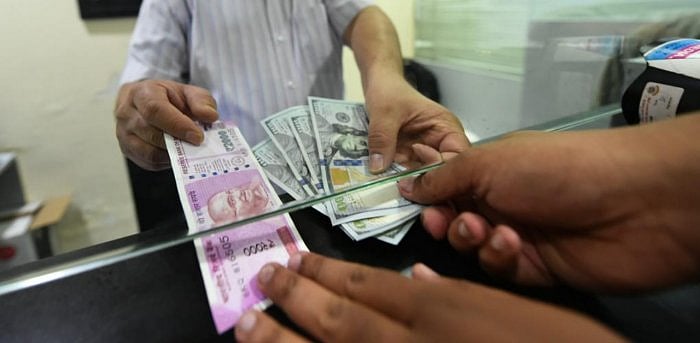
The announcement earlier this month by the Reserve Bank of India (RBI) permitting international trade settlement in Indian Rupee did not come as a surprise. The United States, the European Union and the United Kingdom have imposed sanctions on major Russian banks, preventing them from accessing the Society for Worldwide Interbank Financial Telecommunication (SWIFT) system in the wake of Putin’s invasion of Ukraine. SWIFT, the Belgium-based global interbank system, is accepted and used nearly universally for making payments and facilitating movement of goods and services.
What the denial of SWIFT to Russian banks meant for India was the possibility of export payments of nearly $500 million due from Russia being blocked. There were also substantial security implications. India is a net importer of goods from Russia. In the backdrop of the conflict, India has increased its imports of Russian crude oil. As per Reuters, India has bought at least 13 million barrels of Russian oil since the Russia-Ukraine conflict began in late February. India is also awaiting delivery of sensitive military equipment from Russia.
Further, there was regular outflow of foreign exchange from India. While there is no imminent danger, there is concern. The trade deficit expanded to a record $26.2 billion in June 2022. The trade deficit for the first quarter of the fiscal (Q1FY 23) has touched $70.8 billion, compared to $31.4 billion in Q1FY22. It is expected to only rise further -- with some suggesting it could touch a record $250 billion, or 7.3% of GDP. This would imply a Current Account Deficit (CAD) of up to 3% of GDP. The combination of a widening CAD and persistent foreign portfolio investment (FPI) outflows could have a further impact on the Rupee going forward. It is in this backdrop that the government had recently hiked import duties on gold and imposed export duties on petroleum products.
Thus, such an announcement was on the cards. The RBI circular dated July 11 talks of putting in place an additional arrangement for invoicing, payment, and settlement of exports/imports in Rupees. No mention is made either of SWIFT or Russia in the circular.
The circular permits authorised dealers to open Rupee vostro accounts, after prior approval from the RBI. The special Rupee vostro account would be opened in the corresponding banks of the partner trading country. For settlement, Indian importers would make payment in Rupee. This would be credited into the special account of the corresponding bank against invoices of the overseas supplier. It is estimated that this arrangement could potentially reduce outflows to the extent of $3 billion per month.
For exporters, the export proceeds would be paid in Rupees from the balance of the designated special vostro account of the corresponding bank of the partner country. The circular also significantly permits set-off of export receivables against import payables in respect of the same overseas buyer and supplier.
India has experience of operating alternative payment mechanisms to settle dues in Rupees instead of Dollars. Article VI of the 1953 India-Soviet trade agreement had a clause allowing for Rupee settlement. The arrangement covered all commercial transactions and other payments as mutually agreed by the central banks of India and the erstwhile Soviet Union. The purpose of this arrangement was not to circumvent any sanctions, but to conserve foreign exchange and promote exports.
The key in all such arrangements is the exchange rate at which the settlements are to be done. In the 1953 protocol, the exchange rate was initially arrived at based on the gold standard. Subsequently, the exchange rate was fixed at Rs 10, which was further revised to Rs 31.78. The balance of trade was hopelessly skewed, with imports from Russia far exceeding exports to it. The Rupee balances in USSR accounts kept rising. The arrangement was finally terminated in 1992, and it took a long time thereafter to liquidate the Rupee balance.
Similarly, India had a Rupee-Rial payment mechanism with Iran when economic sanctions were imposed on that country. This worked well to pay for some portion of our oil imports -- till product-specific sanctions were imposed by the US.
There is no doubt that it is strategically essential to have in place alternative arrangements. If Russia does participate in the arrangement, we should be alive to a western charge of helping Russia evade sanctions. It is a different matter that Europe, despite the rhetoric, continues to get its gas from Russia.
The latest RBI circular mentions that the exchange rate between the currencies of the two trading partners “may be market determined”. Times have changed considerably since 1953 when the earlier protocol with Russia was conceived. Today, India’s GDP is higher than Russia’s, as is its credit rating.
India continues to have a trade deficit with Russia. As per the Department of Commerce, imports worth Rs 64,623 crore took place in 2021-22, exports being only Rs 23,658 crore. The possibility of the Rupee balance similarly ballooning if Russia participates in the arrangement cannot be ruled out. The RBI circular does permit utilisation of the excess balance for investment in government treasury bills -- this is a departure, obviously made with an eye to addressing this eventuality. Whether this will take care of the problem will need to be seen. Our experience in the past has also seen cases of switch trading, with Indian exports being diverted to hard currency countries, reaching Helsinki instead of Vladivostok, allowing exporters to divert earnings to shell companies abroad. We would have to be alive to this possibility also.
(The writer is a former Chairman, Central Board of Indirect Taxes & Customs)